Make these Queen Anne’s lace fritters for a delectable late-summer appetizer. These flower fritters can be made sweet or savory depending on your mood. Queen Anne’s lace flowers are edible and delicious, and this Queen Anne’s lace recipe is a great way to make use of them when they’re growing rampantly in your yard!
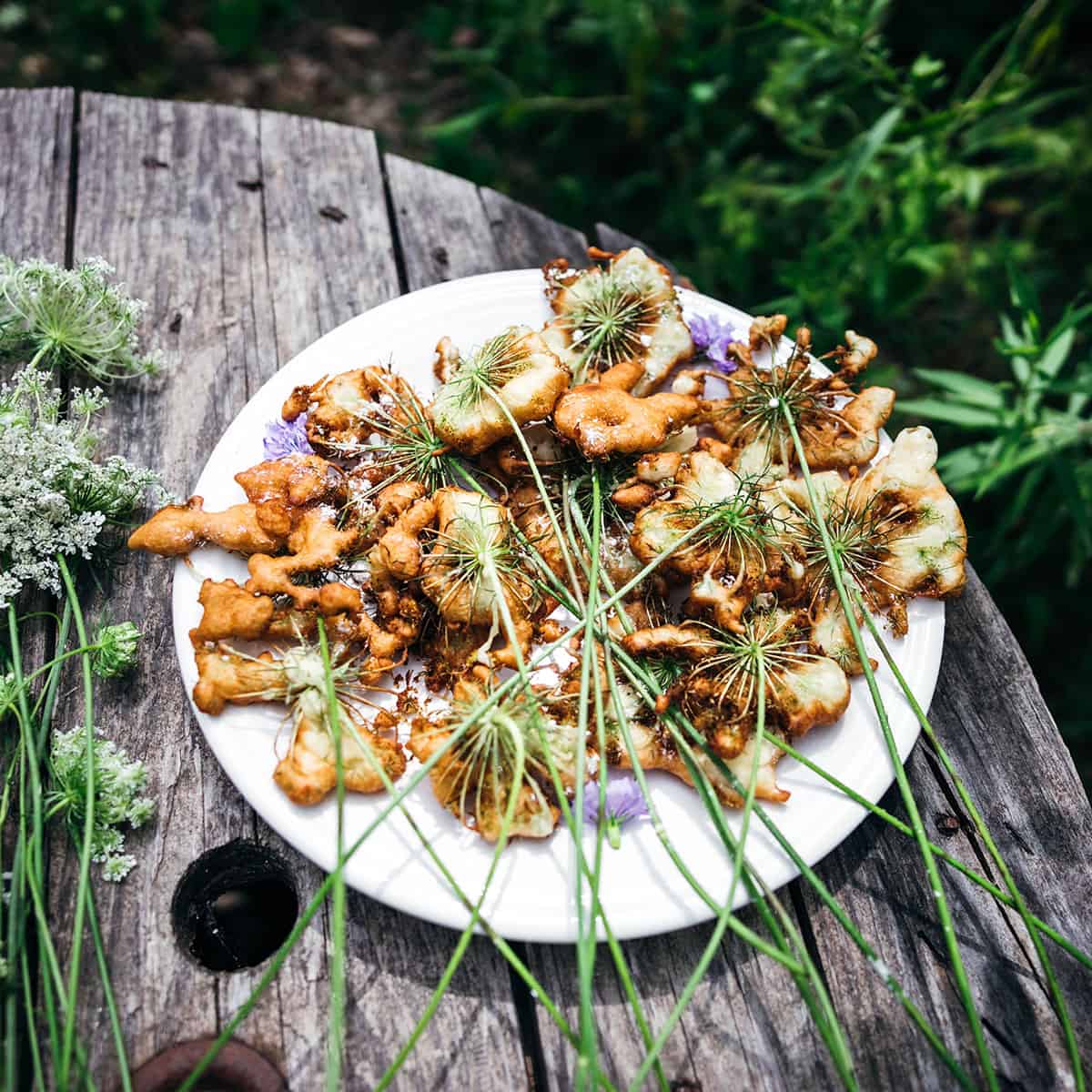
Want to save this post for later?
Each summer I’m in awe of all of these resilient and beautiful lacy flowers growing in the full hot sun along roadsides and in my yard. Queen Anne’s lace flowers are stunning, strong, and perfectly edible!
These edible flowers are super common and easy to find and harvest. If you’ve been wondering what you can do with them, trust me when I tell you to make these Queen Anne’s lace fritters!
This is a late summer treat you don’t want to miss.
Queen Anne’s lace should not be used by pregnant women, due to its uterine stimulation properties. If pregnant or trying to conceive, it’s best not to consume any part of this plant.
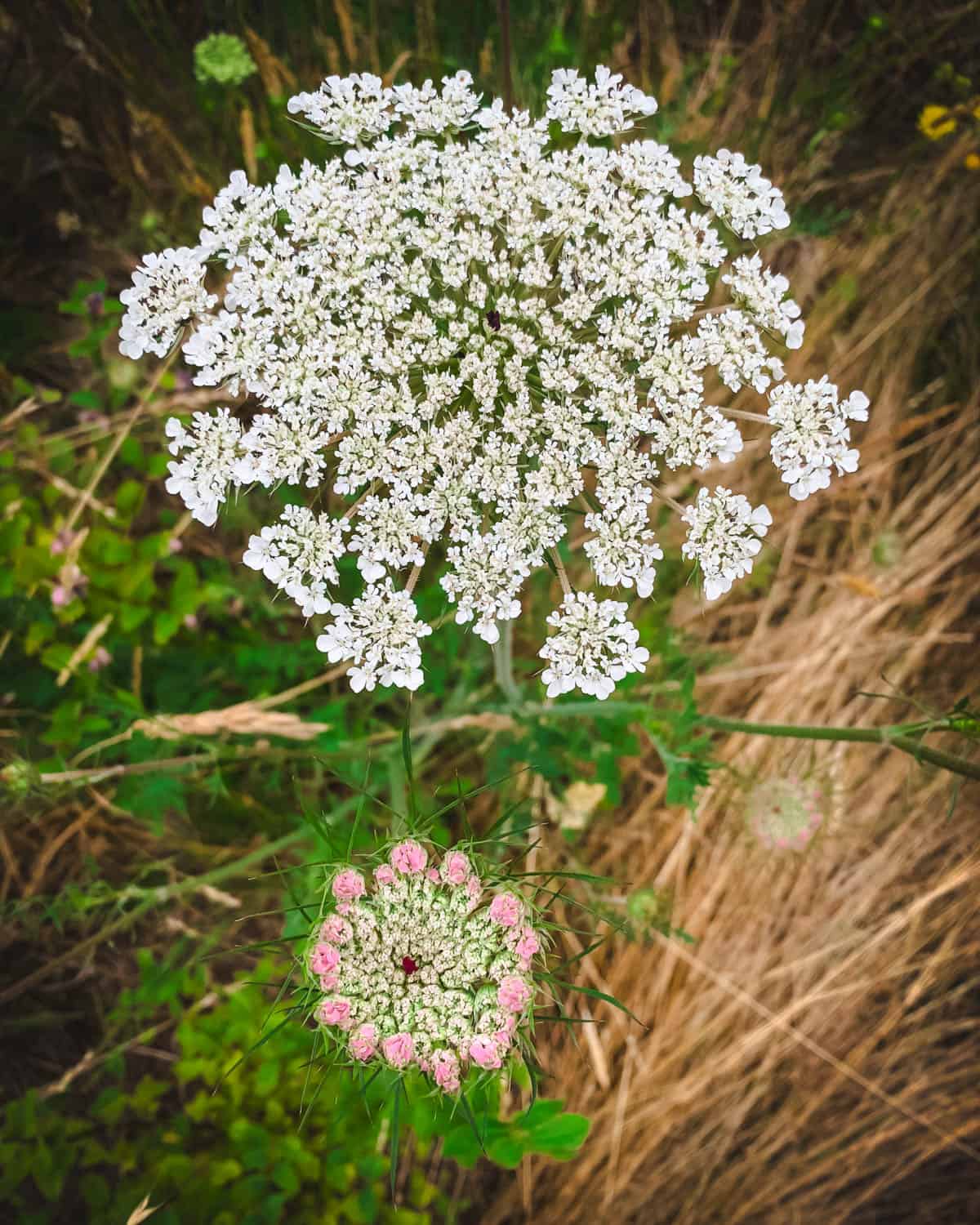
Quick Queen Anne’s Lace Identification
Before making these fritters, it’s very important to properly identify Queen Anne’s lace.
This is a flower that is likely very recognizable to most people. To me, it signifies the warmest days of my childhood summers when the days were slow with the dark golden sun and the smell of ripe blackberries.
This edible flower has several factors that are clear indicators that it is safe to use. However, it’s important to know that there are some toxic look-a-likes to Queen Anne’s lace too, most notably poison hemlock.
Look out for these main identifying features of Queen Anne’s lace:
- An umbel-shaped flower that curls into a “bird’s nest” shape as it ages.
- Hairy stem and stalks. Remember: The Queen has hairy legs!
- Many flowers, but not all, have a dark purple floret in the middle.
- They smell like carrots since they are technically wild carrots.
Find an in-depth description of all of the Queen’s identifying features as well as exactly how to tell if it’s a toxic look-a-like in my guide to foraging and identifying Queen Anne’s lace.
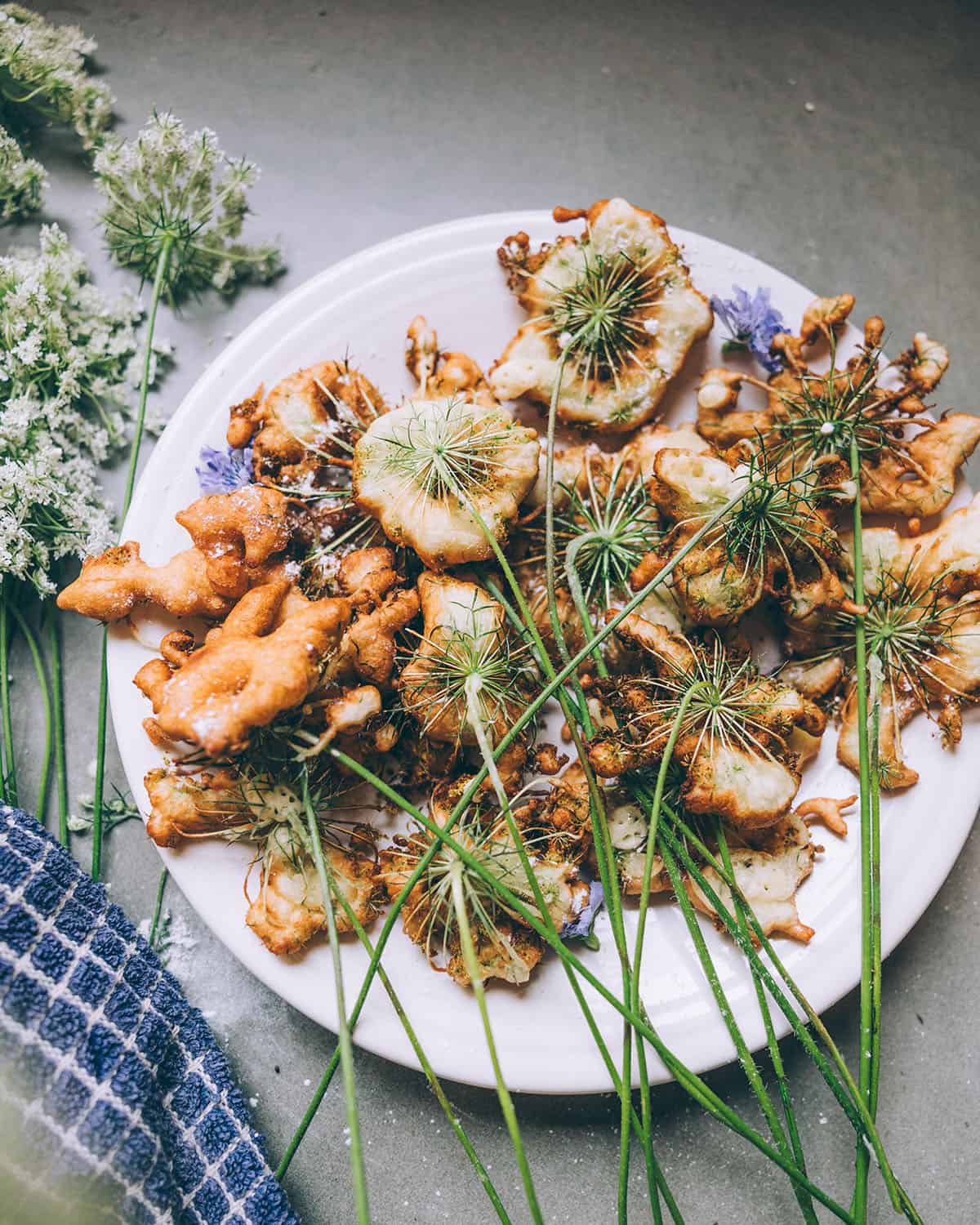
Get recipes using wild violet, lilac, forsythia, chive, calendula, lavender, white clover, nasturtium, elderflower, yarrow, rose, and Queen Anne’s lace flowers in my ebook Edible Flower Recipes: Infusions, Syrups, Jellies, Beverages, & Snacks!
How to Eat Queen Anne’s Lace
These Queen Anne’s lace fritters have delicious sweet or savory flavors, depending on what you decide. I recommend you make both! They are a super flavorful, nutritious, crispy side or appetizer. Plus, they’re so beautiful.
Queen Anne’s lace flowers can also be called wild carrot flowers. Either way, they’re edible flowers and these fritters are my favorite way to make them.
Queen Anne’s Lace Recipe
Fried wild carrot flowers are easy to make and use very simple ingredients. It’s likely you can go out and gather some Queens and make these up with what you have in your kitchen already.
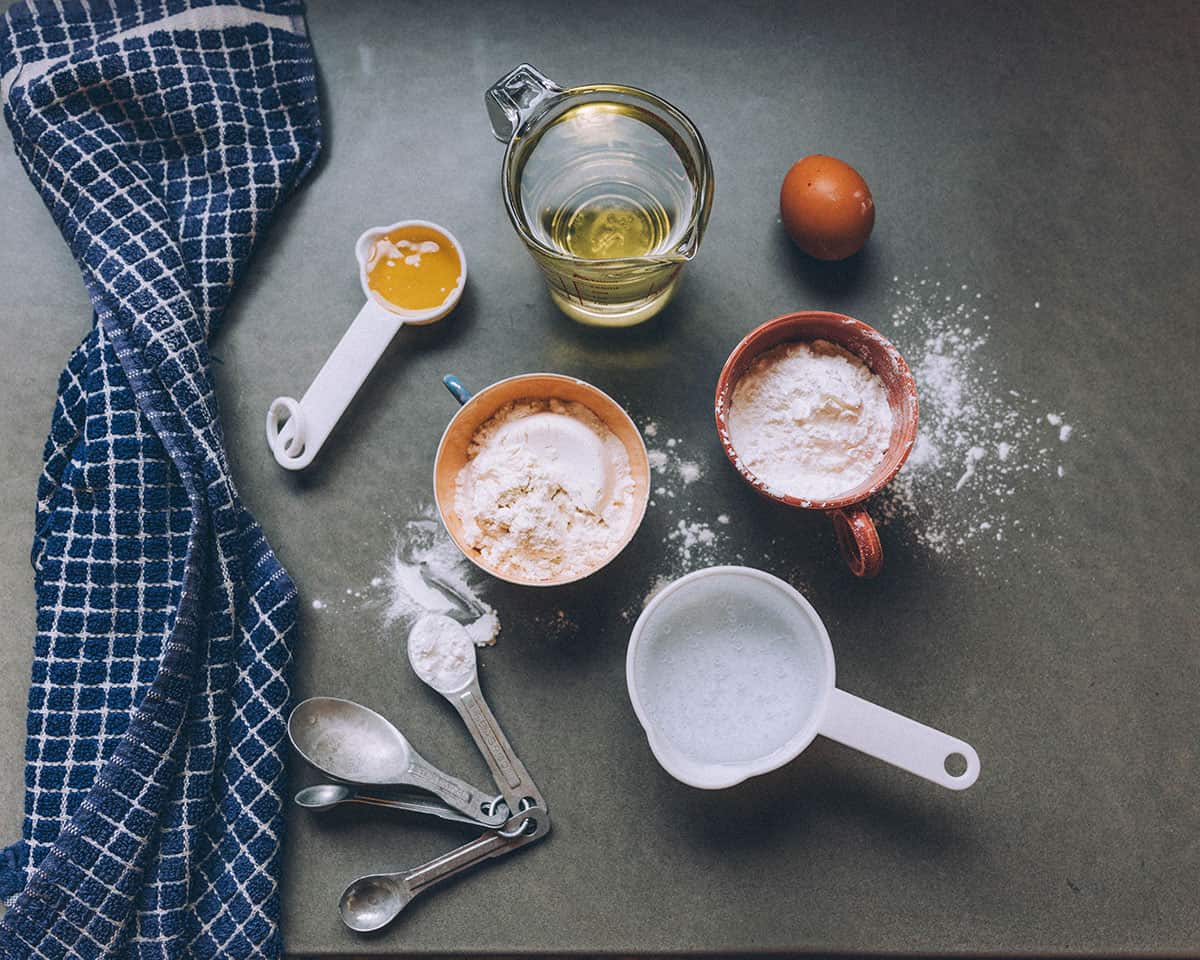
Ingredients
Whole fresh Queen Anne’s lace flowers: Make sure to keep the (hairy!) stems on when you harvest them, as you’ll need them for dipping.
Note: For flower fritters in a different season, you can substitute elderflowers, dandelions, or other edible flowers.
Canola oil: I always opt for organic canola oil. Other vegetable oils will also work, but I don’t recommend using olive oil for frying.
All-purpose flour: I like this organic flour, but use what you have.
Arrowroot powder: If you don’t have arrowroot powder, it’s fine to substitute it with cornstarch.
Baking powder: Any baking powder will do!
Salt
Egg
Honey: I always use raw honey, use whatever is your favorite for this edible flower recipe.
Sparkling water: The bubbles in sparkling water keep these fritters light and fresh tasting.
Powdered sugar: Use what you have for garnish.

Make Queen Anne’s Lace Fritters
First, heat the oil over medium-high heat in a heavy-bottomed 10-inch skillet. I use my cast iron and it works really well.
While the oil heats up, stir together the flour, arrowroot, baking powder, and salt.
Add the egg and honey to the dry mixture.
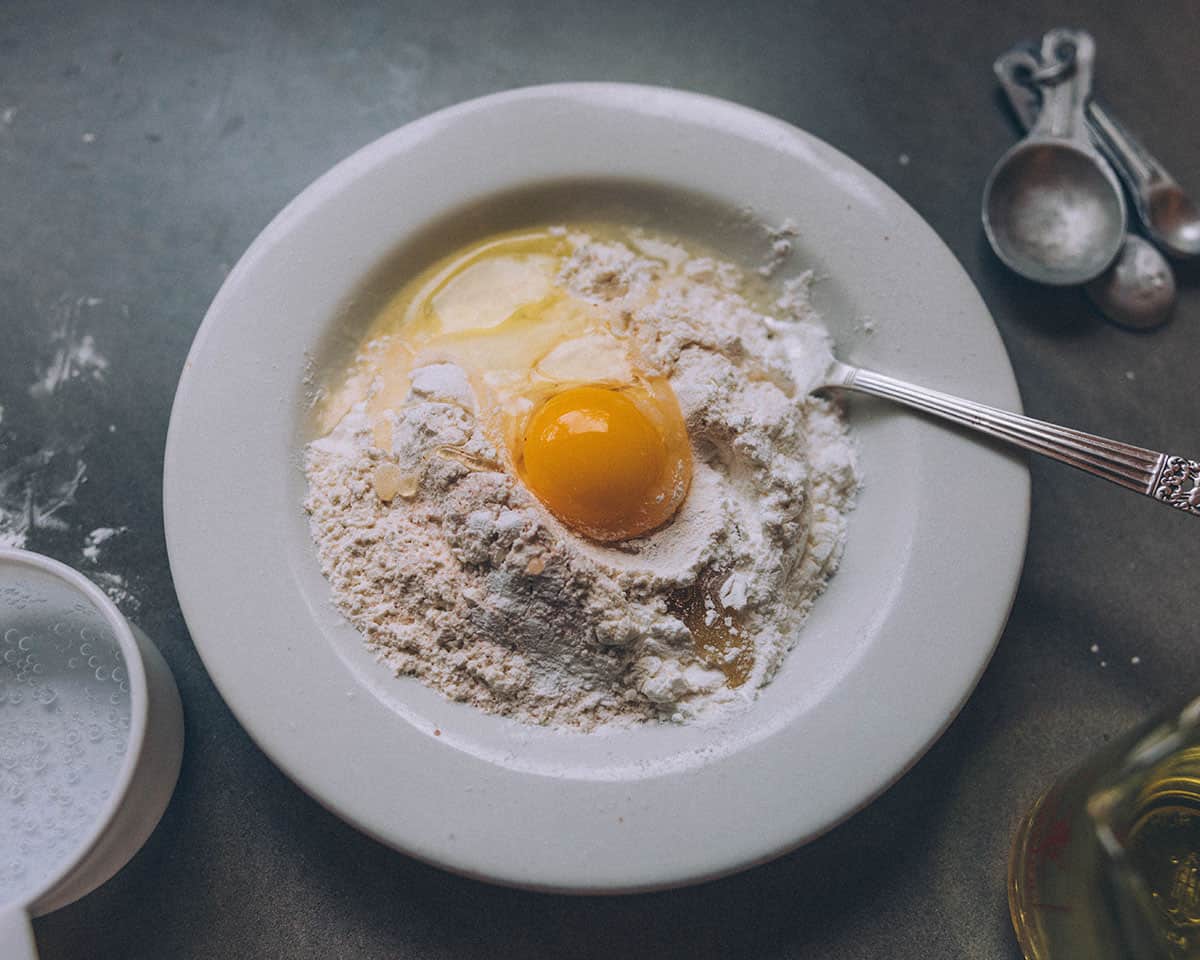
Now add the sparking water to the flour, and stir to combine. It might be a little bit lumpy, but that’s ok. It will still turn out perfectly!
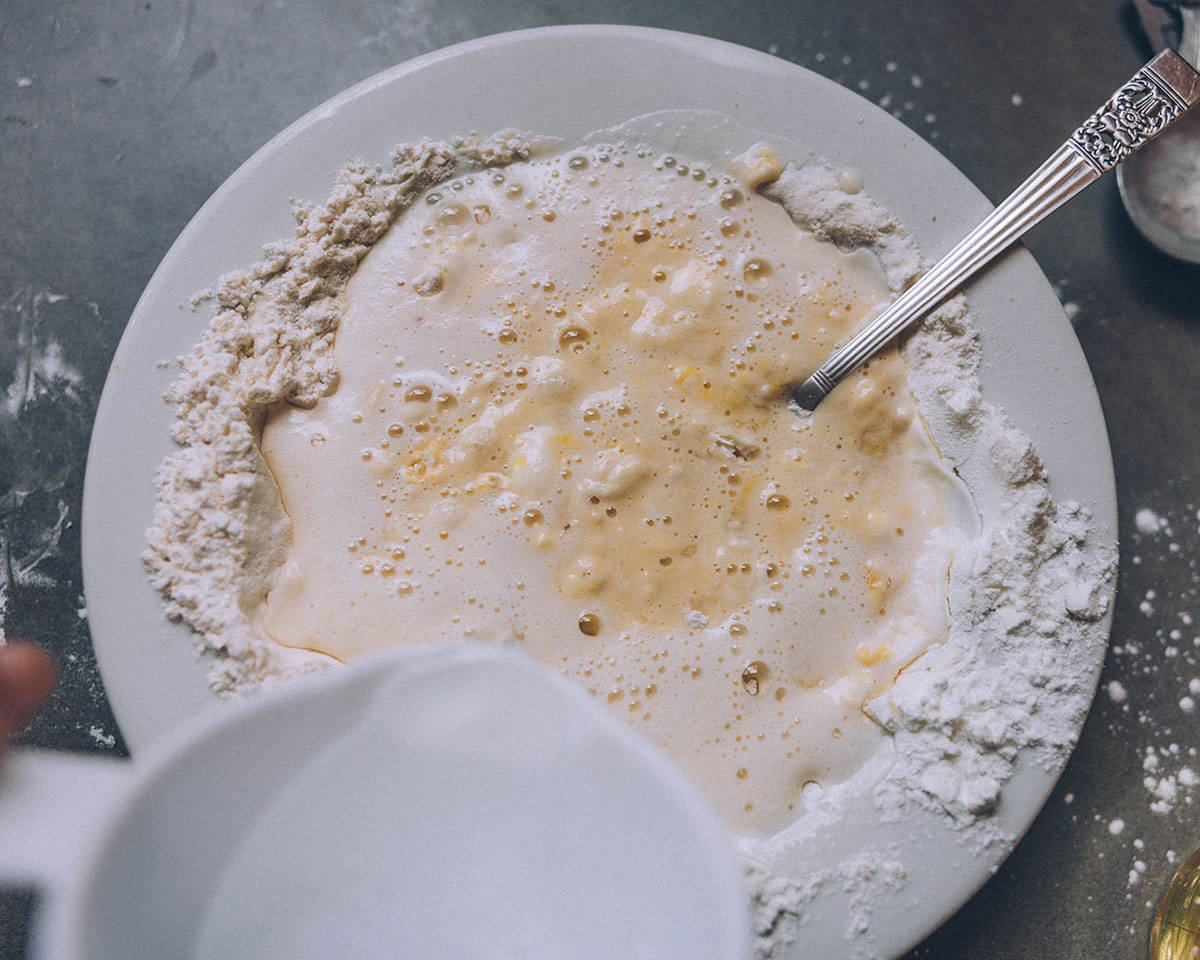
Test to see if the oil is hot enough by dripping in a tiny bit of the batter. If it is hot enough, it will sizzle immediately.
If it’s not quite hot enough yet you won’t get a sizzle, so let it heat up for a few more minutes.

Once the oil is hot and sizzling, hold on to the stems and dip the Queen Anne’s lace flowers into the batter one at a time.
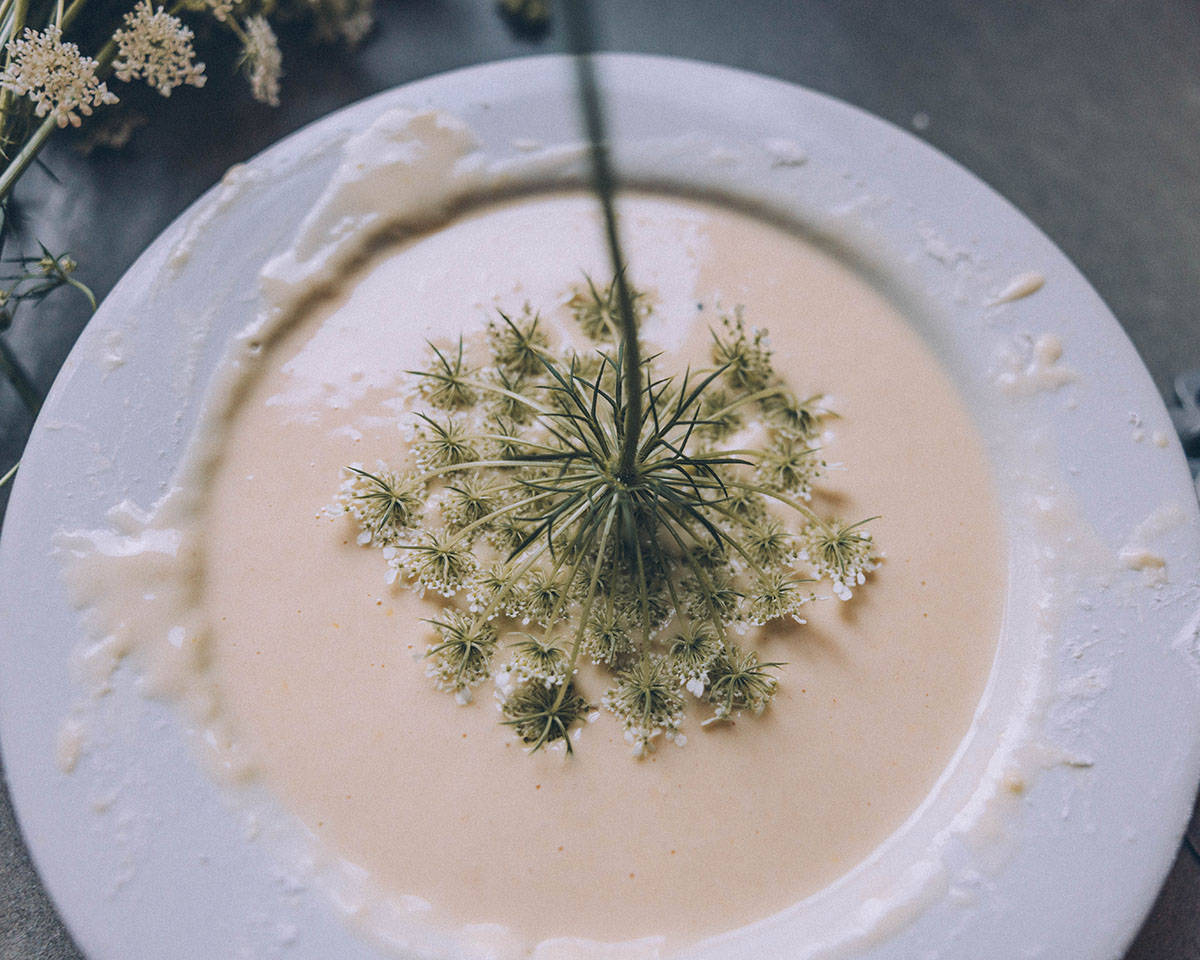
Give the flower a small twirl after pulling it out from the batter to get rid of any excess. This will also help the flower spread out a bit.
Then carefully place the battered flower into the hot oil. The flower will immediately sizzle.
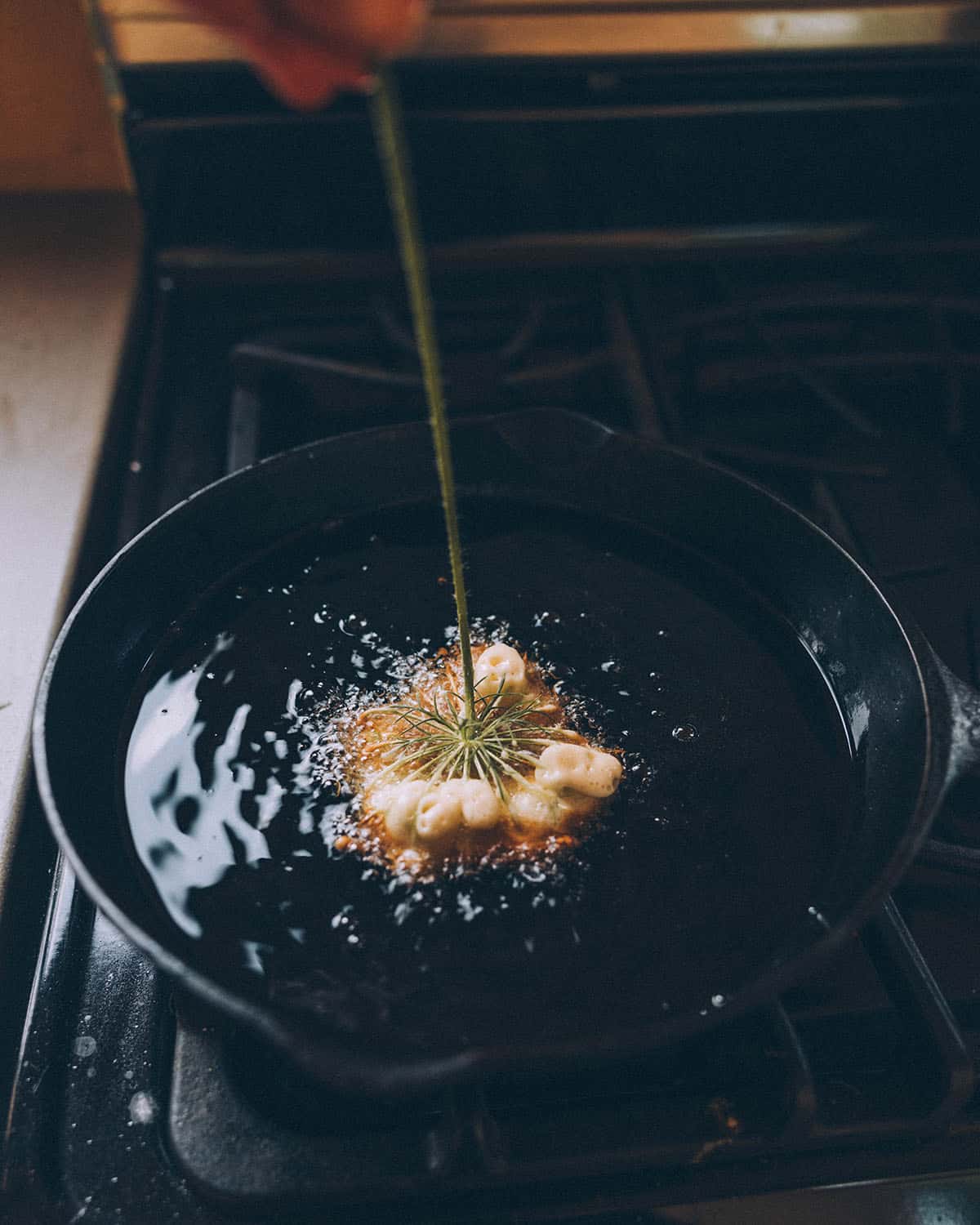
You can probably fit 3-4 in the pan at any one time if you want the process to go a little bit quicker.
Fry each flower for 30-60 seconds, or until they are a light golden brown.
Then remove each flower from the hot oil, using tongs if needed, and transfer it to a plate that is lined with a paper towel.
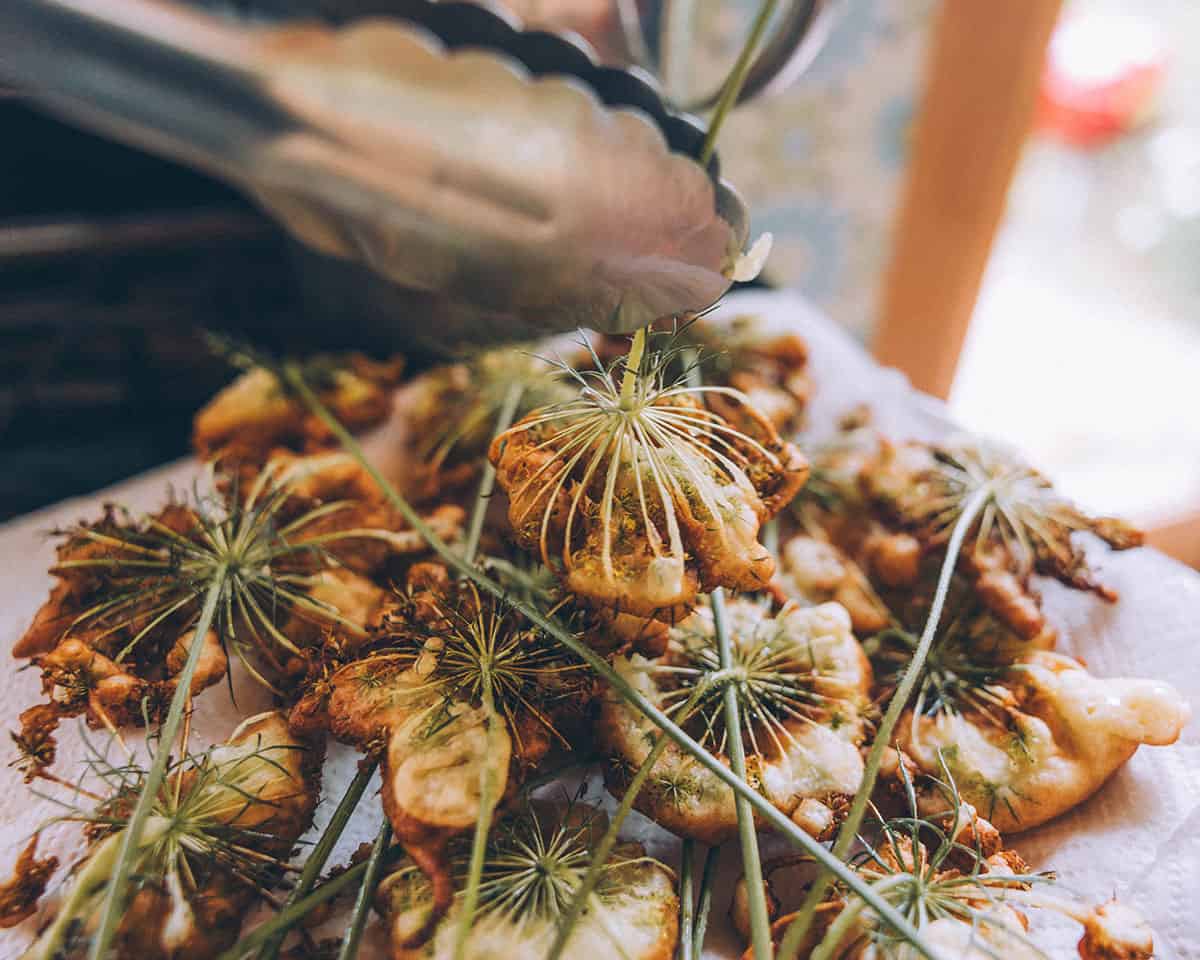
Now you can sprinkle the fried flowers with powdered sugar and serve!
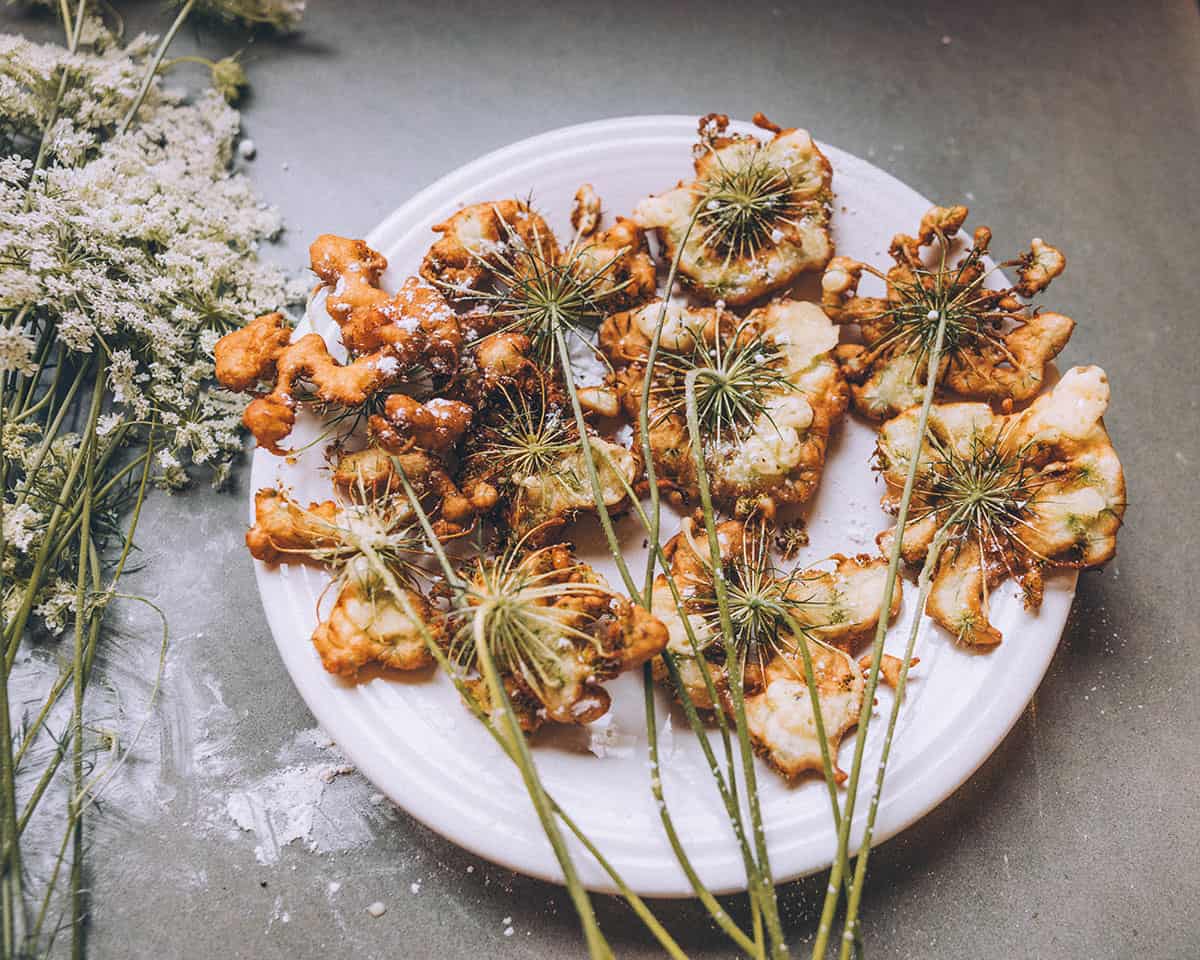
To Make Savory Fritters
If you want a savory fritter, omit the honey and powdered sugar for garnish. Instead, add paprika and ground black pepper into the flour mixture. These are just as tasty!
Eat and Store Queen Anne’s Lace Fritters
Once these tasty fritters are cool enough, they can be held by the stem to eat the flower. The green bracts are edible, but not as easy to chew as the flowers.
These edible flower fritters make a perfect appetizer, happy hour snack, or replacement for french fries alongside almost any dish.
Queen Anne’s lace fritters taste a little bit carroty but with either a sweet or savory kick depending on how you choose to make them. They have a delicious light crunch and are a perfect snack!
While there’s unlikely to be any leftovers of these delicious fritters, store any extras in an airtight container in the refrigerator for 2-3 days.
Enjoy this Queen Anne’s lace recipe as a late-summer foraged treat full of natural goodness!
More Edible Flower Recipes
- Nasturtium Flower Infused Vinegar
- How to Make Dandelion Tea
- White Clover Iced Tea
- Dandelion Cupcakes with Lemon Buttercream Frosting
- Low-Sugar Dandelion Jelly
- Elderflower Muffins w/ Honey
Queen Anne’s Lace Fritters
Equipment
Ingredients
- 12-18 whole Queen Anne’s lace flowers with stems attached
- 2 cups organic canola oil
- ½ cup all purpose flour
- ½ cup arrowroot powder or cornstarch
- 1 tsp baking powder
- ½ tsp salt
- 1 egg lightly beaten
- 2 Tbsp raw honey
- ¾ cup cold sparkling water
- powdered sugar for garnish
Instructions
- Heat the oil in a heavy bottomed 10 inch skillet (cast iron works well) over medium high heat.
- Stir together the flour, arrowroot, baking powder, and salt.
- Add the egg, honey, and sparking water to the flour, and stir to combine. It may be a bit lumpy, that’s ok.
- Test to see if the oil is hot by dripping in a tiny bit of the batter. It should sizzle immediately; if it doesn’t, let it heat for a few more minutes.
- Once the oil is hot, hold on to the stem and dip the Queen Anne’s lace flowers into the batter one at at a time. Give the flower a small twirl after removing it from the batter to get rid of any excess batter and to help it to spread out a bit.
- Then carefully place the flower into the hot oil. The flower will immediately sizzle. You can fit 3-4 in the pan at any one time if desired.
- Fry each flower for 30-60 seconds, or until they are a light golden brown. Use tongs to remove each flower from the hot oil, and transfer to a plate lined with a paper towel.
- Sprinkle the fried flowers with powdered sugar before serving.
Notes
- For a savory fritter, omit the honey and powdered sugar garnish and add ½ teaspoon paprika and ¼ teaspoon ground black pepper to the flour mixture.
- Substitute elderflowers, dandelions, or other edible flowers for Queen Anne’s lace flowers as the season allows.

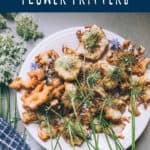

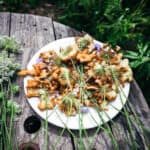

I have made these and they are Delicious. Of course I have never met a fritter I didn’t like. All the best and love foraged flower recipes.
hi…I LOVE your stuff. I am so surprised, though, that you use highly inflammatory canola oil in your recipes. ?
Expeller pressed, Non-GMO organic canola oil is healthier than conventional versions because chemical solvents weren’t used to make the oil.